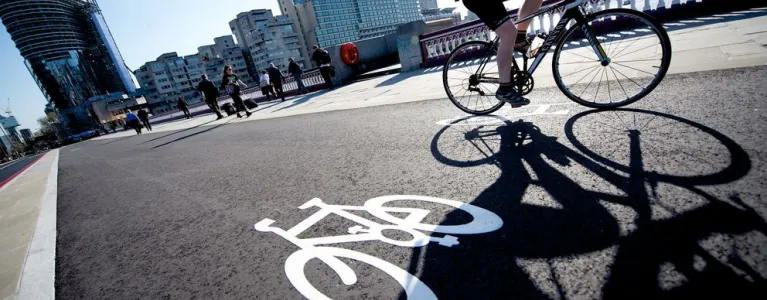
Coronavirus has transformed our way of life for the short, medium and long-term. But one thing that hasn’t changed is our commitment to keeping Londoners safe and improving the health and wellbeing of anyone who lives, works and visits our city.
As we encourage the use of public transport to be used by those needing to make essential journeys only, we’ve been working on rolling out ambitious plans quickly to get London moving in a green, sustainable way that enables social distancing and is both accessible and excellent for the environment.
Here’s what we’re doing to help more people walk and cycle in our city:
1. Creating the world’s largest car-free zone of any capital city in the world
To keep our roads free from congestion and gridlock as the COVID-19 lockdown is gradually eased, London will see more people walking and cycling than ever before.
Thanks to our TfL Streetspace programme, London is creating one of the world’s largest car-free zones. You’ll see some of our famous streets converted to walking and cycling only, with others restricted to all traffic apart from buses.
-
We’re proposing streets between London Bridge and Shoreditch, Euston, Waterloo, Old Street and Holborn to be limited to buses, pedestrians and cyclists to help boost safe and sustainable travel as our city starts to gradually emerge from national COVID-19 restrictions.
-
We’re working specifically with the City of London to complement plans they’ve developed to prioritise pedestrians and cyclists. Cars will be restricted on key streets between Old Street and Bank, and between Cannon Street and Holborn to Bank
-
Access for emergency services and disabled people will be maintained, although deliveries on some streets may need to be made outside of congestion charging hours.
2. Widened pavements and trebled cycle lanes
Some Londoners may have noticed that we’re widening pavements in town centres to allow people to access local essential shops and services more easily, with 5,000 square metres of pavement space already added in just a week.
Here’s a great example from Brixton, where local children chalked their appreciation on the new pavement space.
Before the coronavirus struck, the amount of protected space for cycling in London that is either complete or under construction had reached a total of 162km – more than triple the amount compared to May 2016. We’re now moving to roll out an even more protected network of Cycleways across the city.
3. Opening up our world famous bridges and streets
London’s famous bridges have been opened up to move people along smoothly. Waterloo Bridge and London Bridge will be for pedestrians, bikes and buses only, with pavements widened to enable people to safely travel between busy railway stations and their workplaces.
TfL is looking into providing Zero Emission Capable taxis with access to both these bridges, and other areas where traffic is restricted.
And when it comes to our famous streets, you’ll start noticing some changes too. Park Lane, previously an urban motorway with a 40mph speed limit, has had a segregated cycle lane installed overnight, and a 20mph rule installed to make cycling easier and safer.
4. Expanding the Santander Cycles hire scheme
We’re adding new Santander Cycles bike hubs to enable more of us to cycle around London.
The Santander Cycles scheme is also supporting the switch to healthy and sustainable modes by setting up staffed hubs at Waterloo, Kings Cross, Holborn, Liverpool Street and Soho Square, to ensure that everyone who needs to travel in these areas has access to a bike. These hubs will be prioritising social distancing and cleaning will take place at each location.
Santander Cycles will continue to support NHS staff and other key workers by extending the offer of free hires to July, providing these workers with an unlimited number of 30 minute journeys.
More than 10,000 free hires to key workers have been made since the scheme launched in March. And last week, the scheme saw its busiest weekend on record.
5. Keeping our commitment to improving air quality
Following the Government announcement of coronavirus related travel restrictions, traffic levels on TfL roads fell by as much as 60 per cent and harmful nitrogen dioxide was down by around 50 per cent on some of London’s busiest roads. But as the capital gets moving again, traffic and pollution are now starting to rise.
The Mayor’s air quality programme, including the introduction of the Ultra Low Emission Zone (ULEZ), had already contributed to a reduction of 44 per cent in roadside nitrogen dioxide in central London between February 2017 and January of this year.
To prevent London’s roads from becoming unusably blocked with congestion, TfL reintroduced the Congestion Charge and ULEZ on Monday 18 May. These schemes reduce congestion and pollution and help tackle the climate emergency, and the Low Emission Zone, which discourages the use of the dirtiest lorries and large vans, was also reintroduced at the same time.
Find out more about City Hall’s work to improve London's Transport.